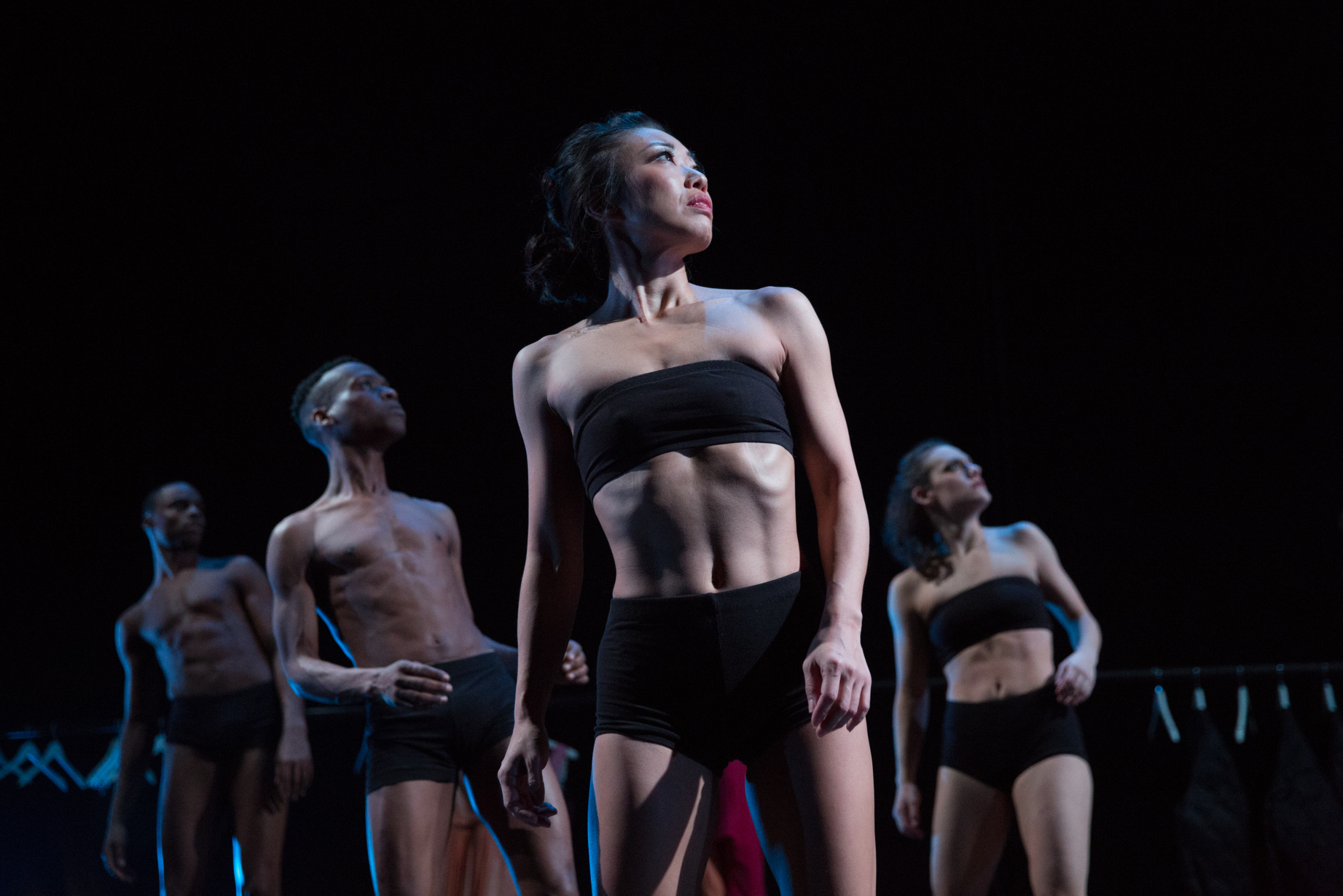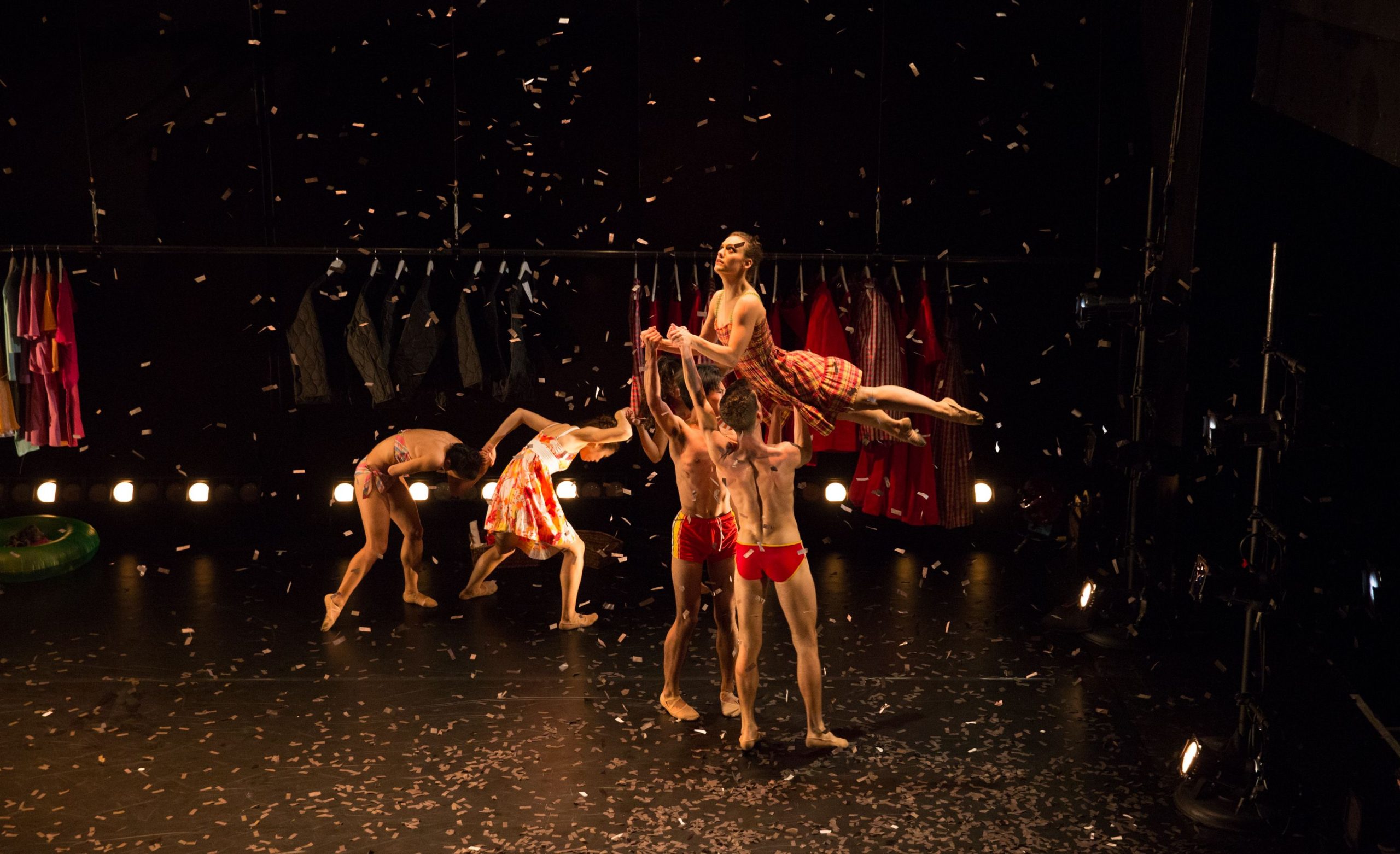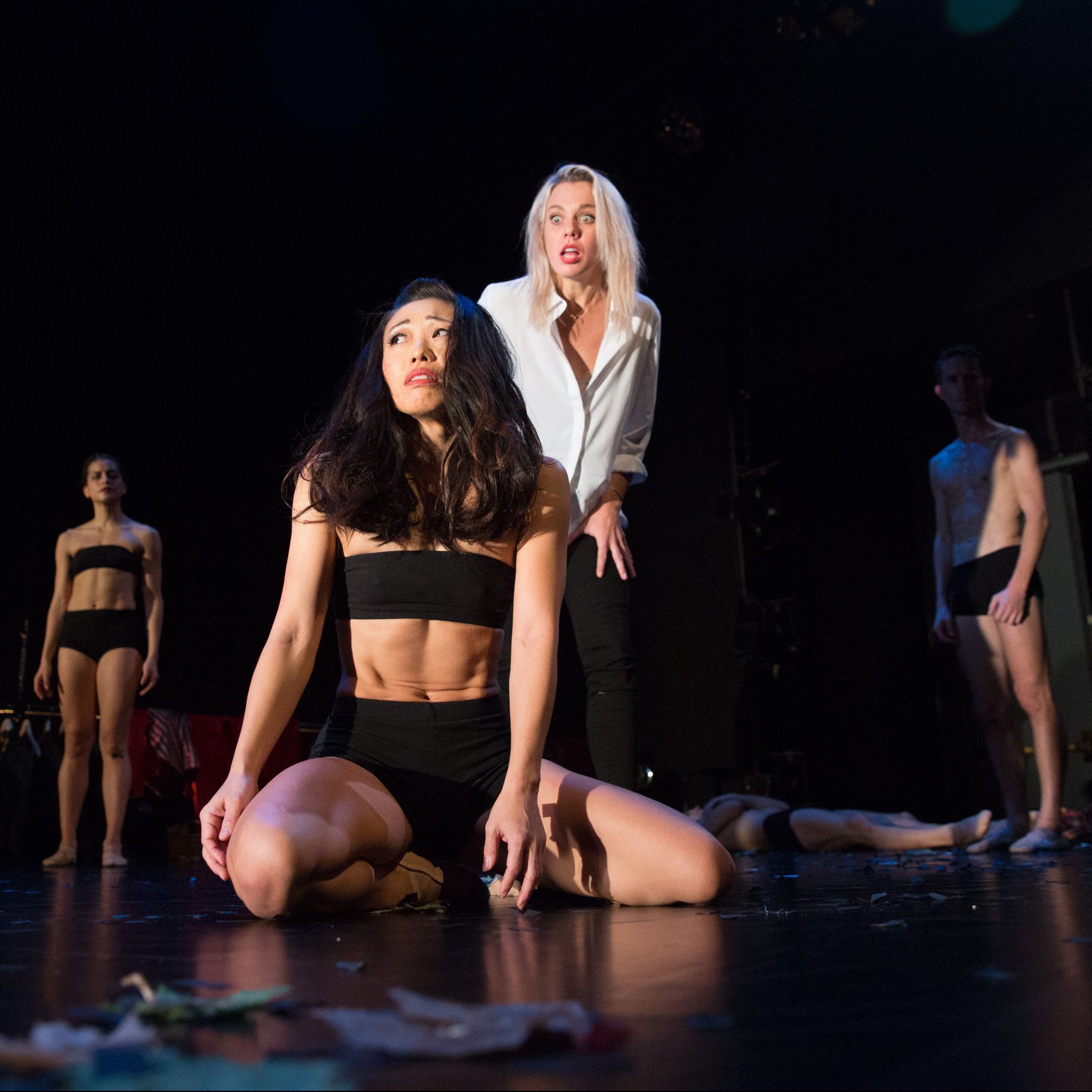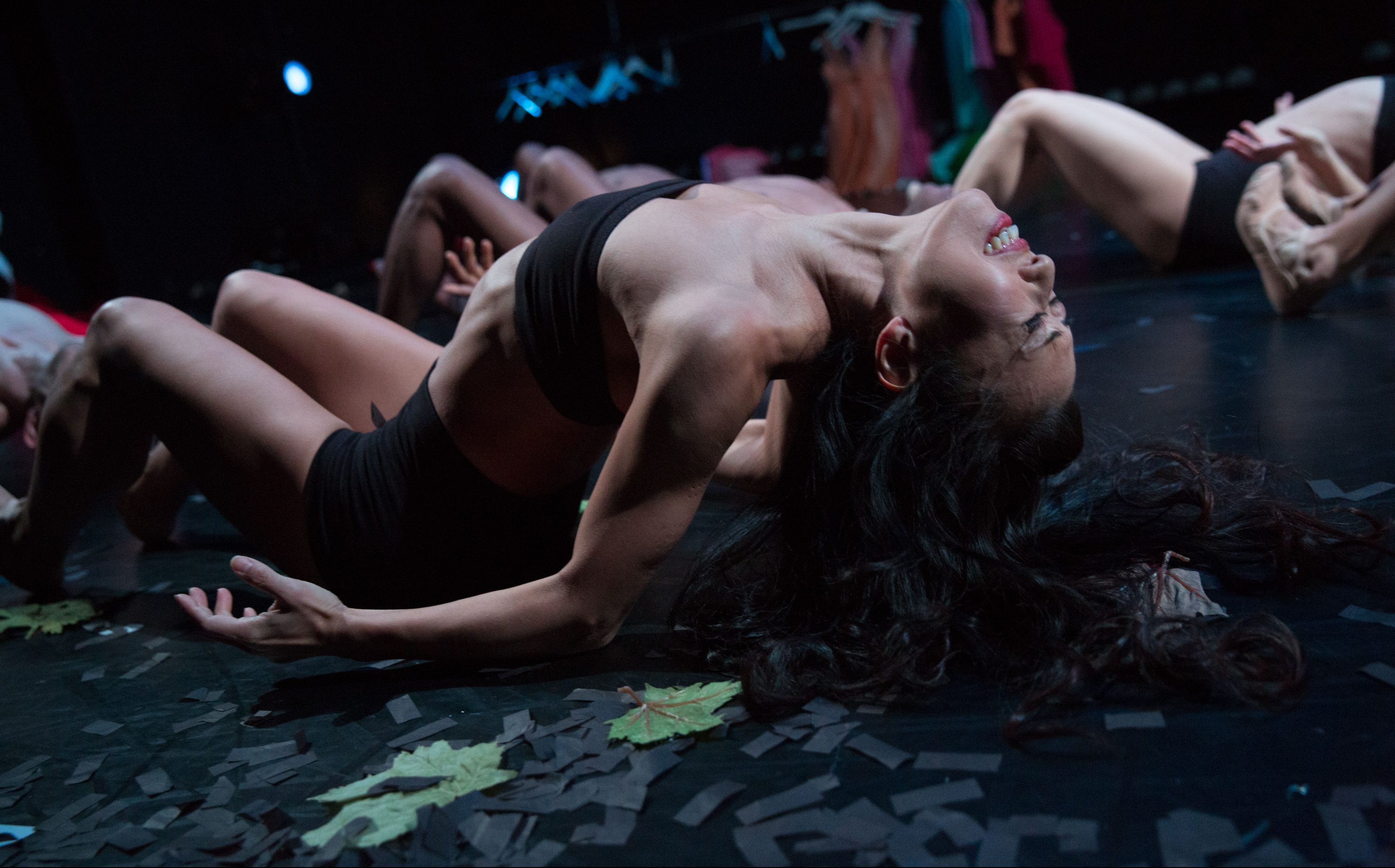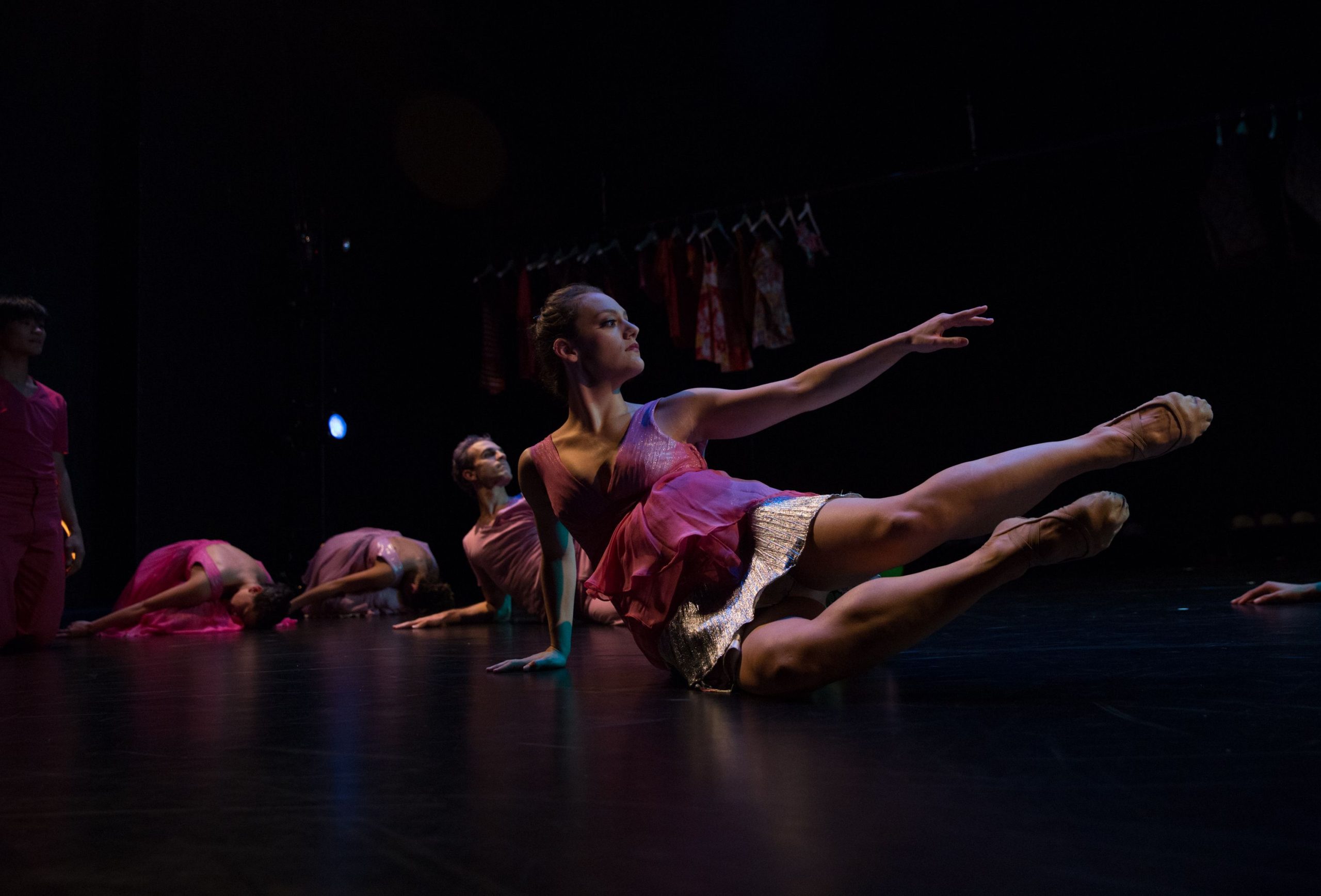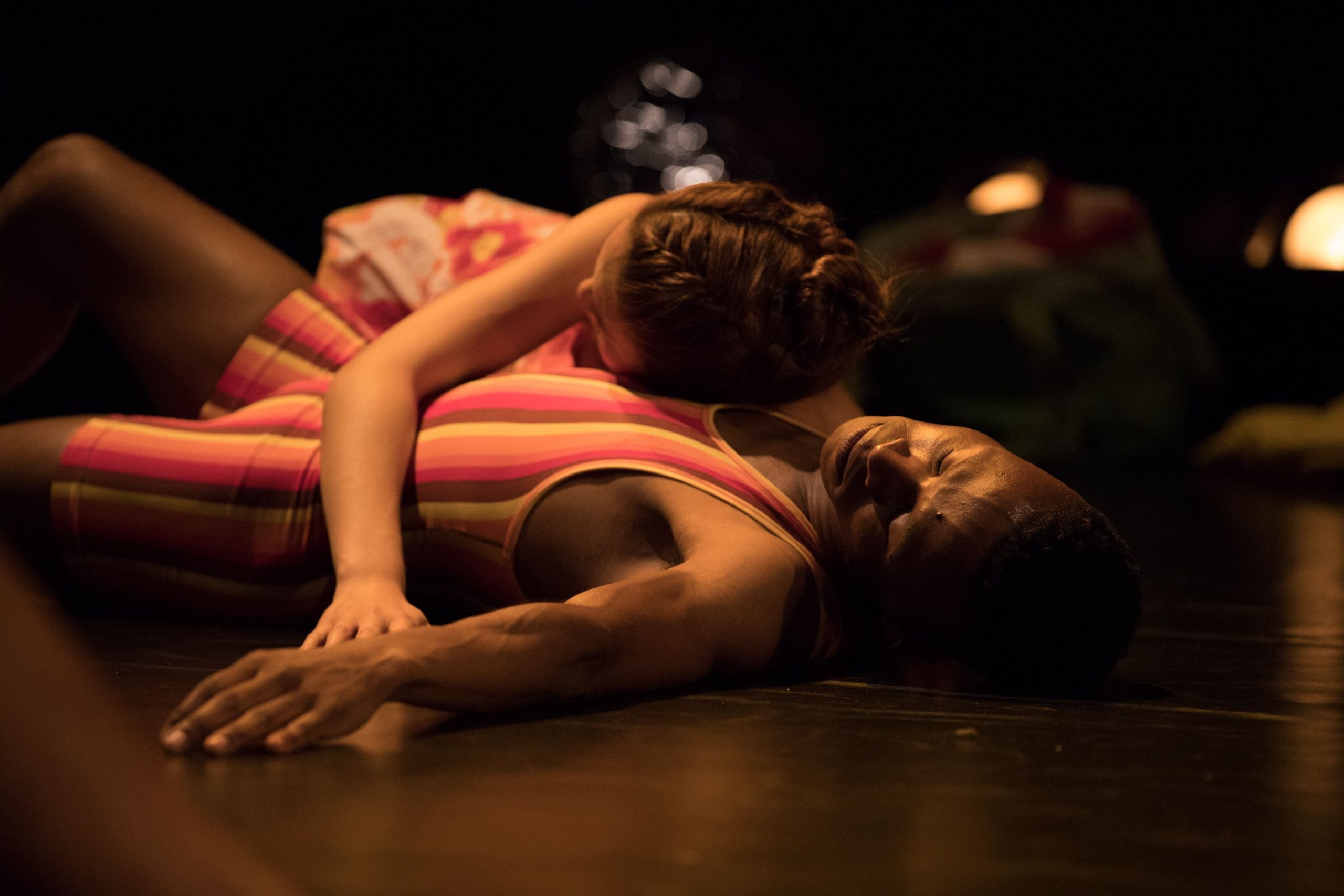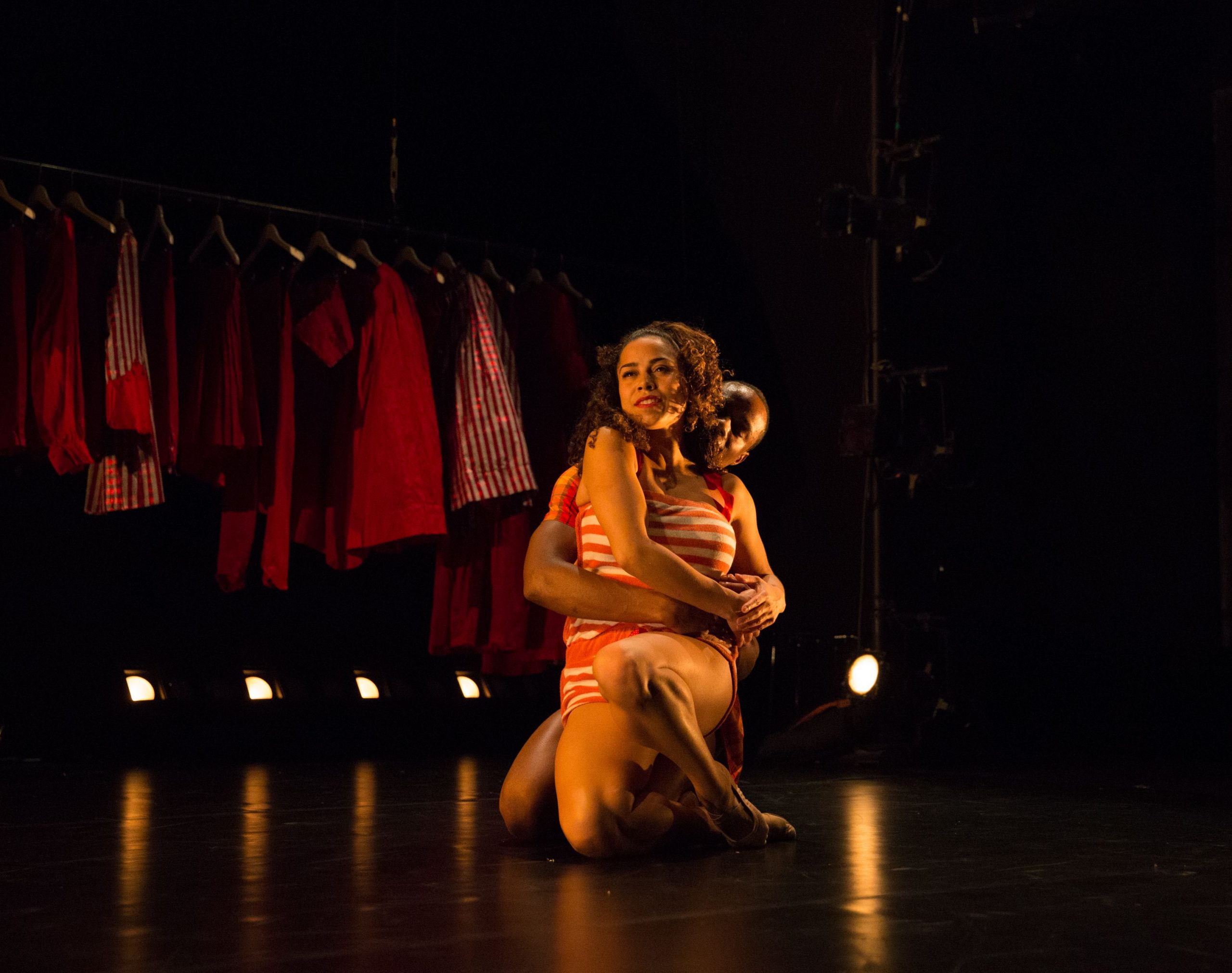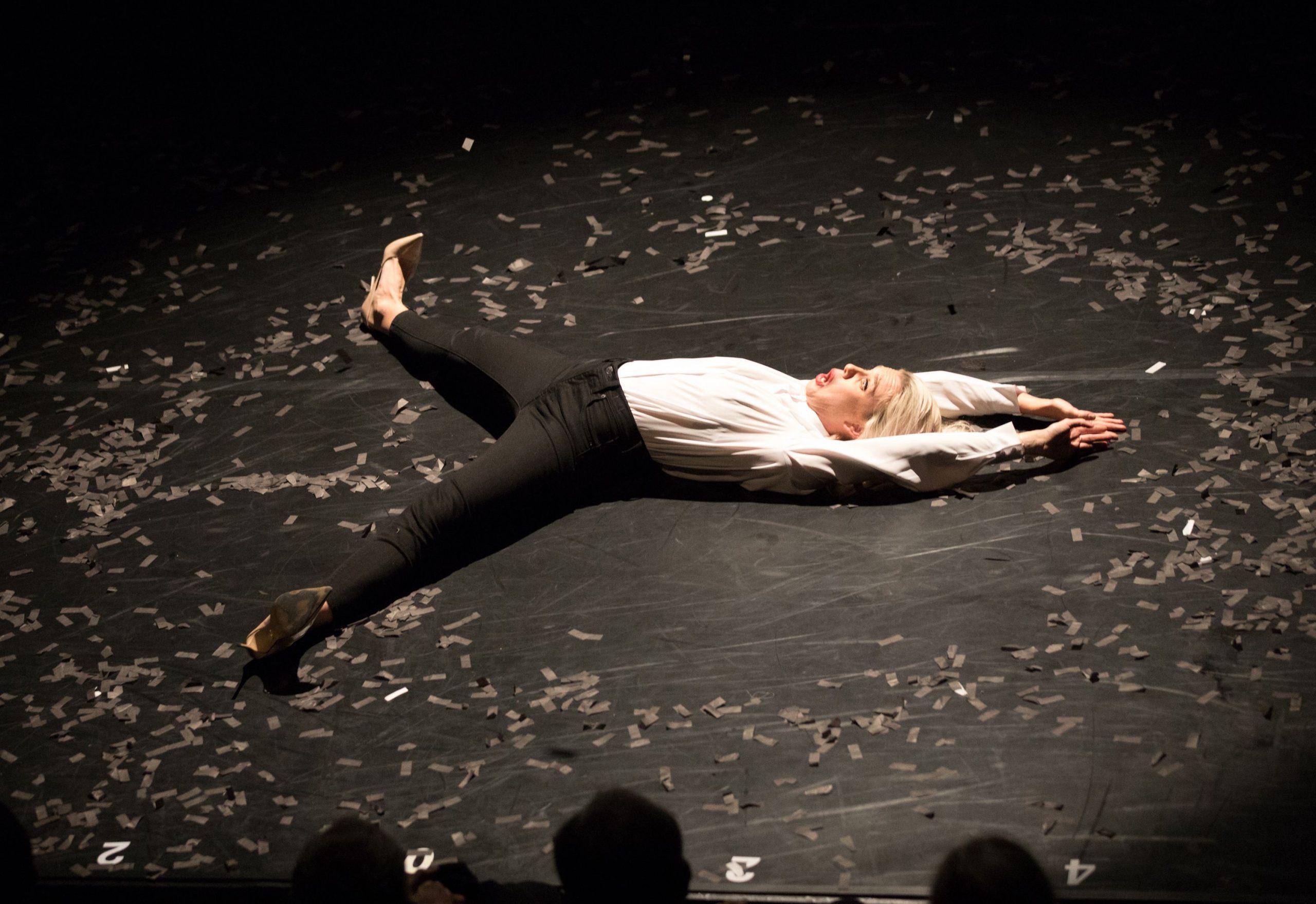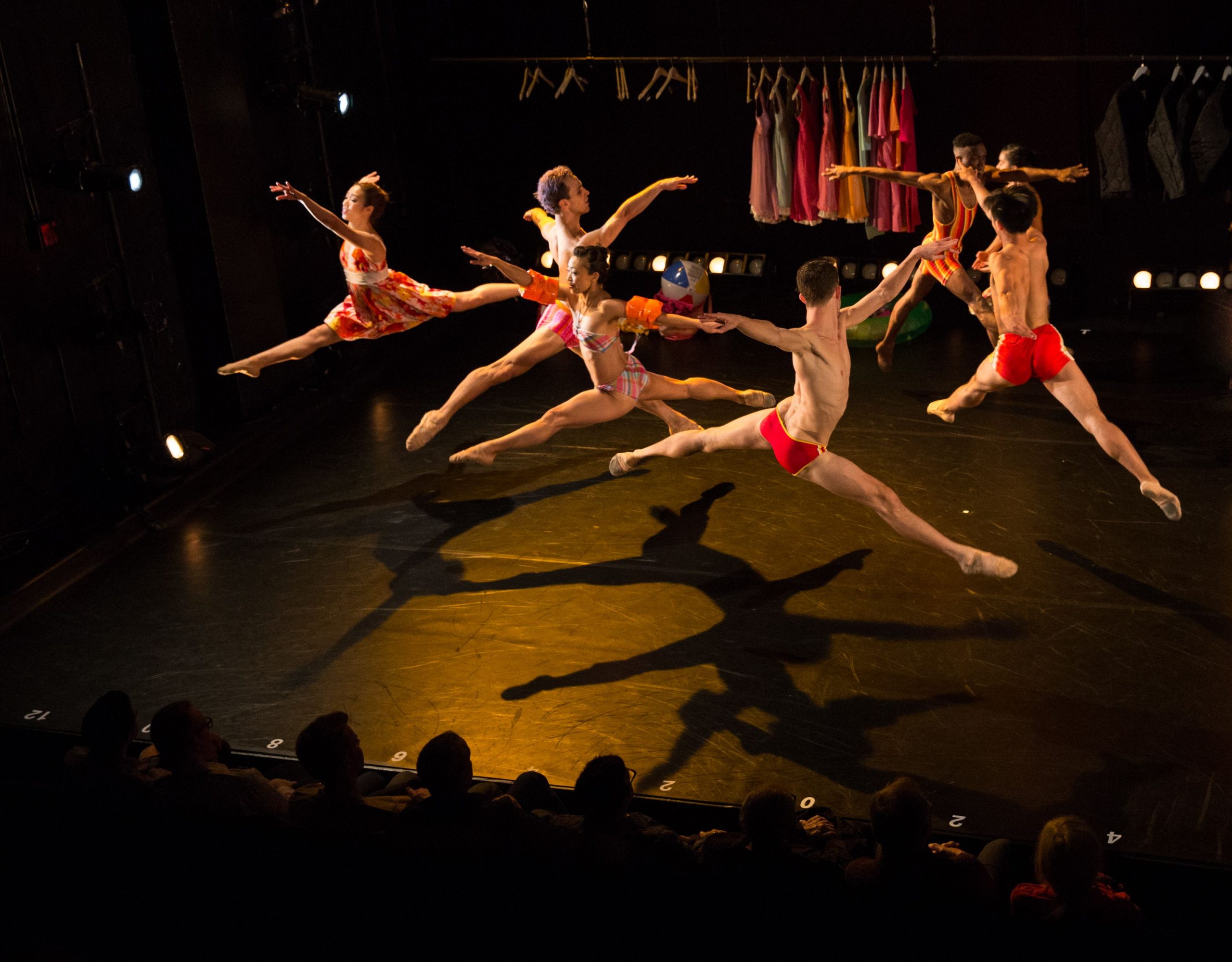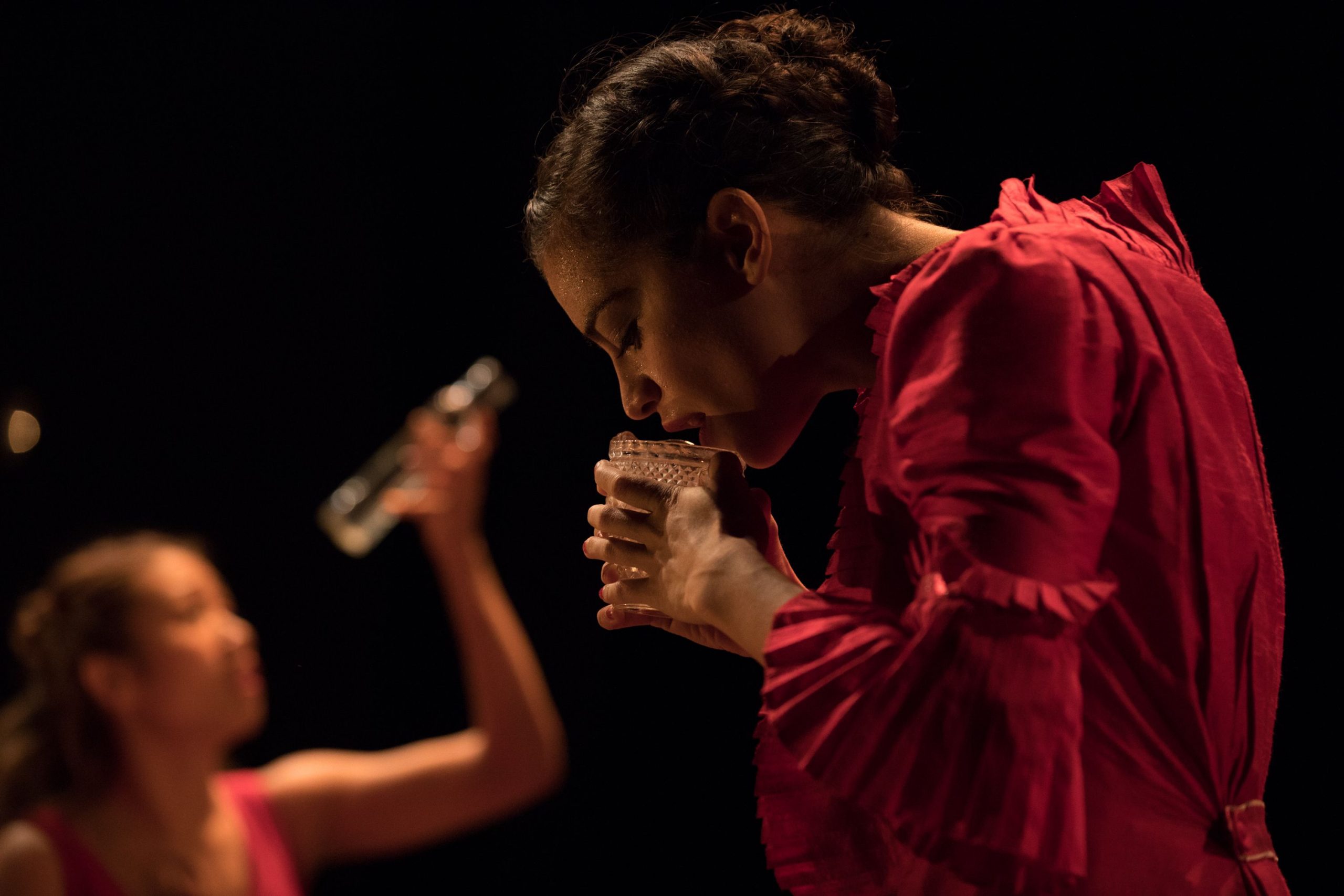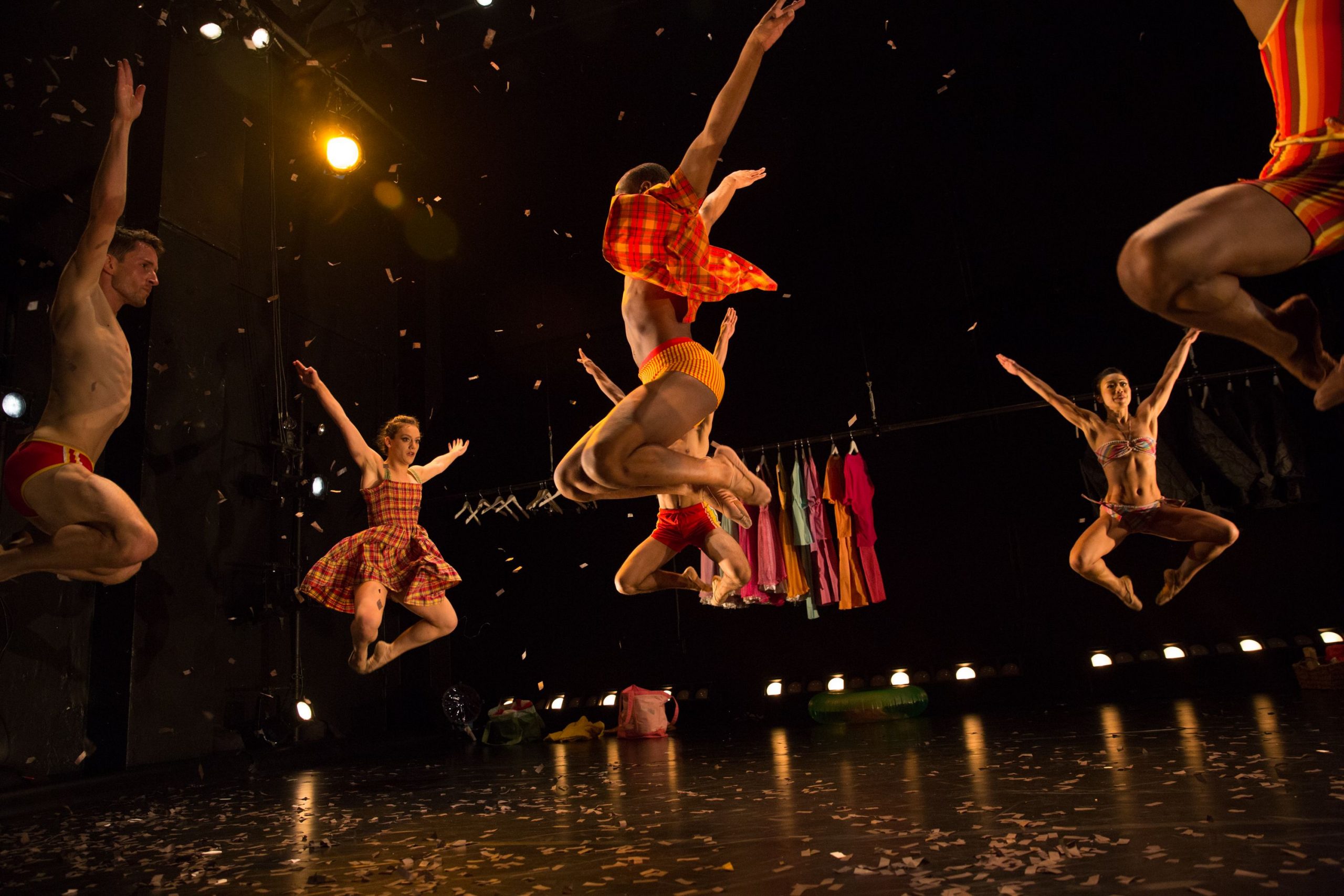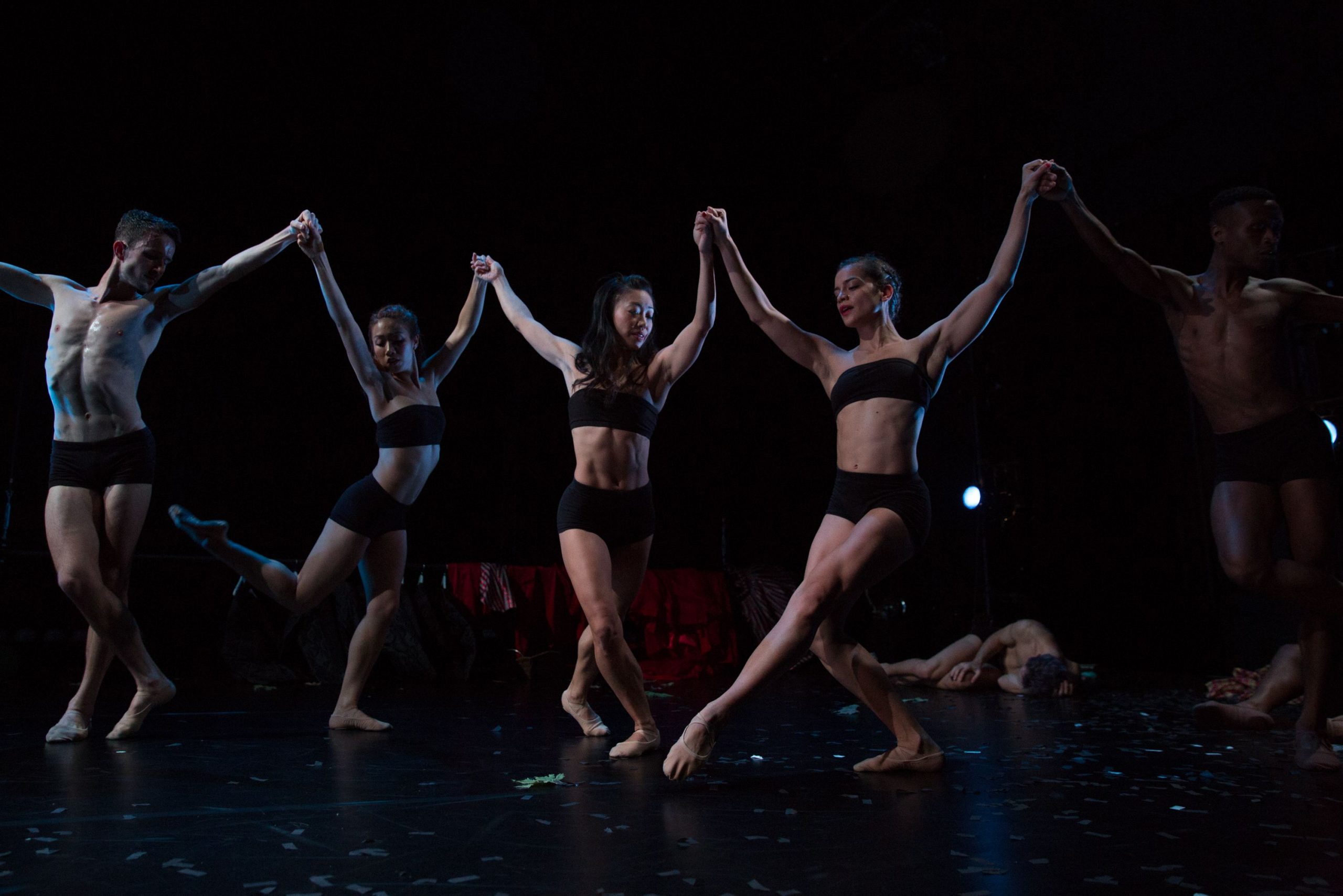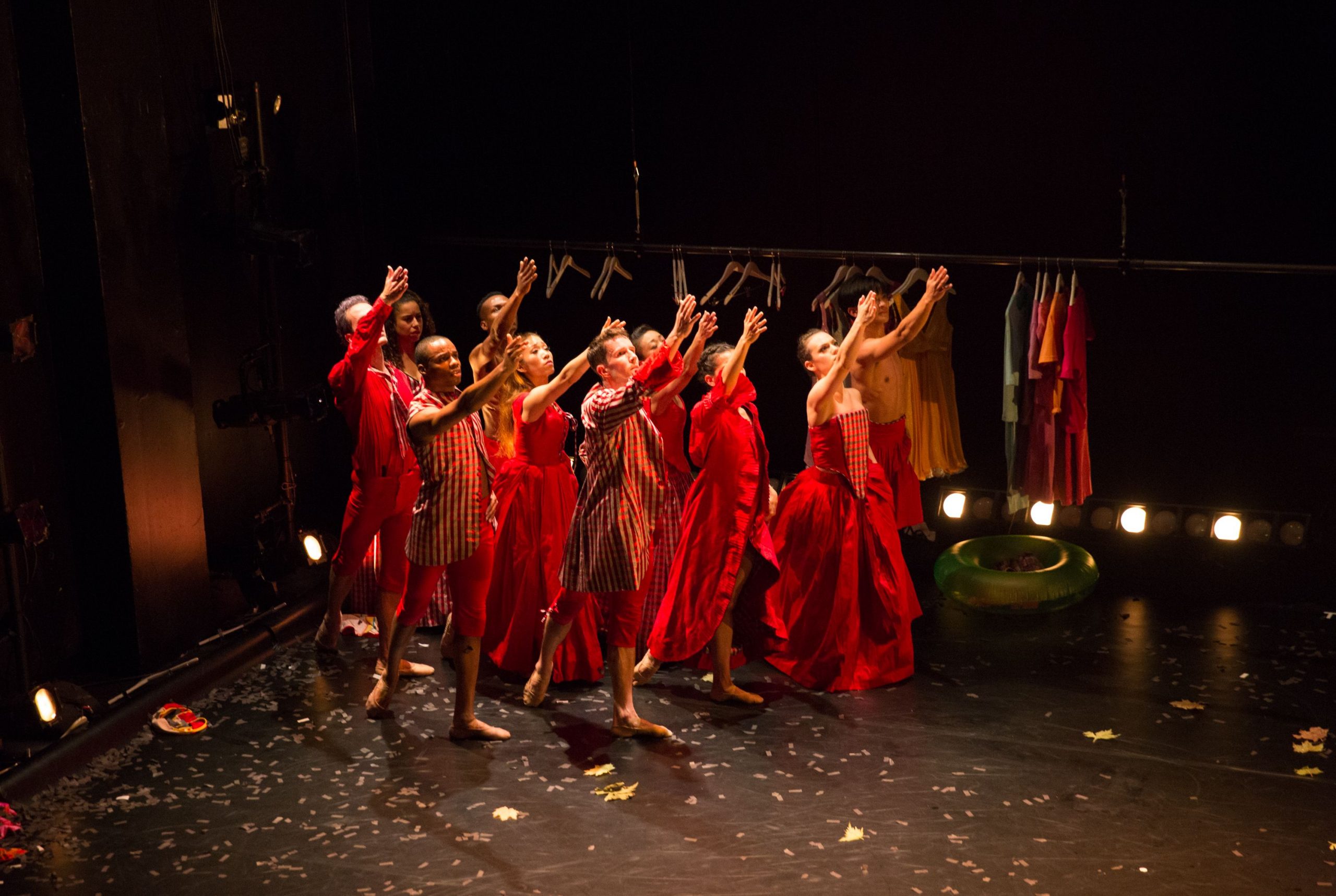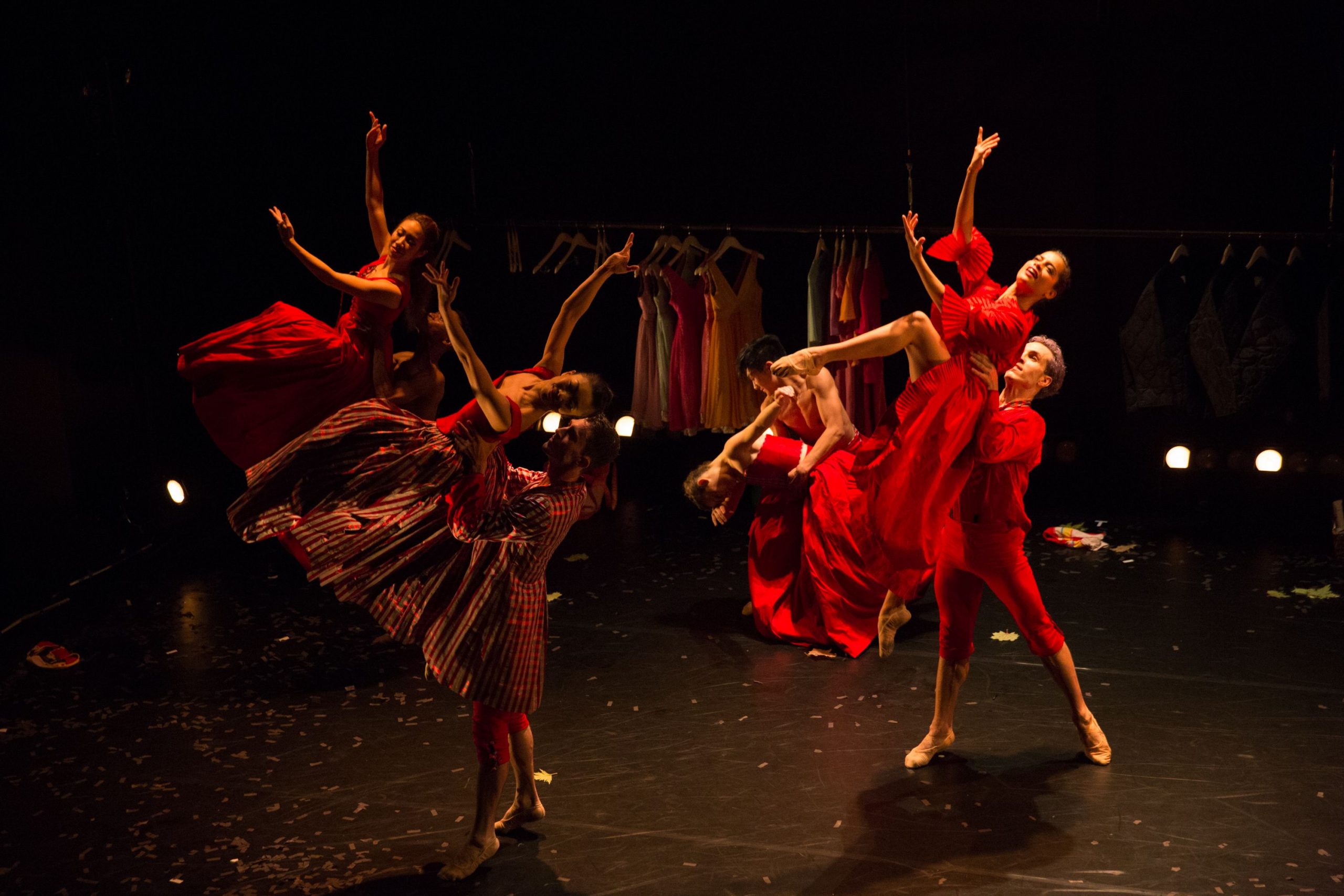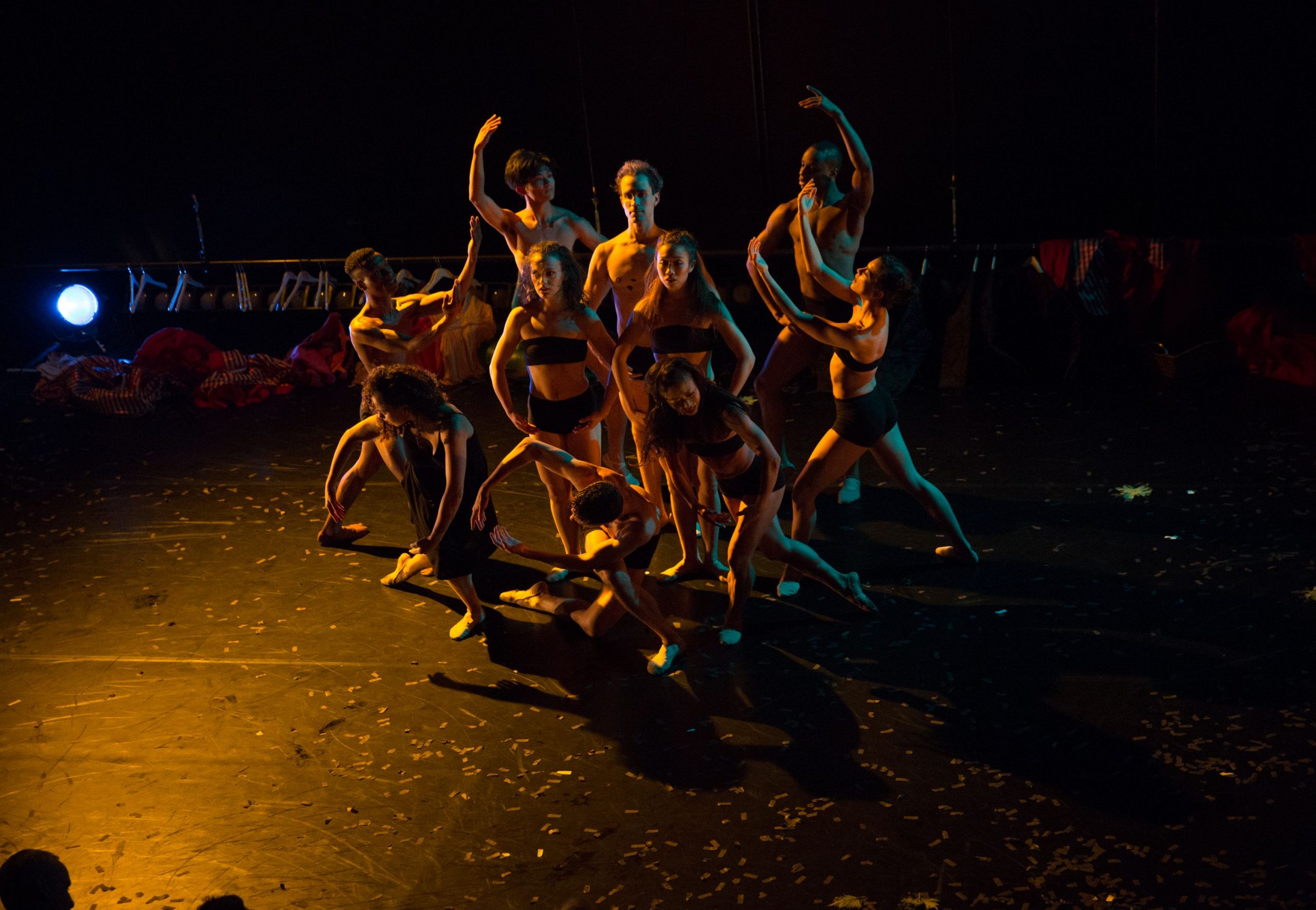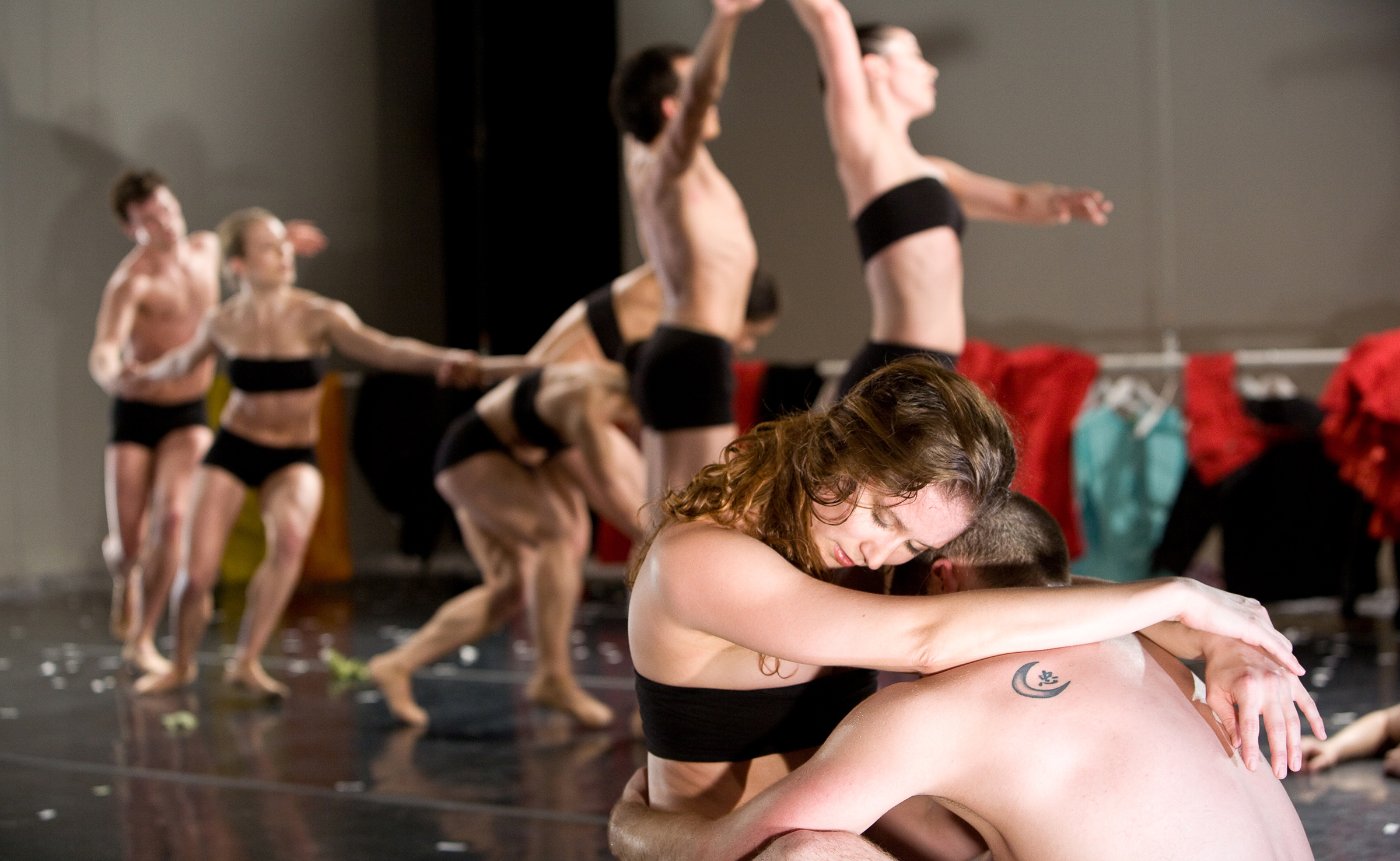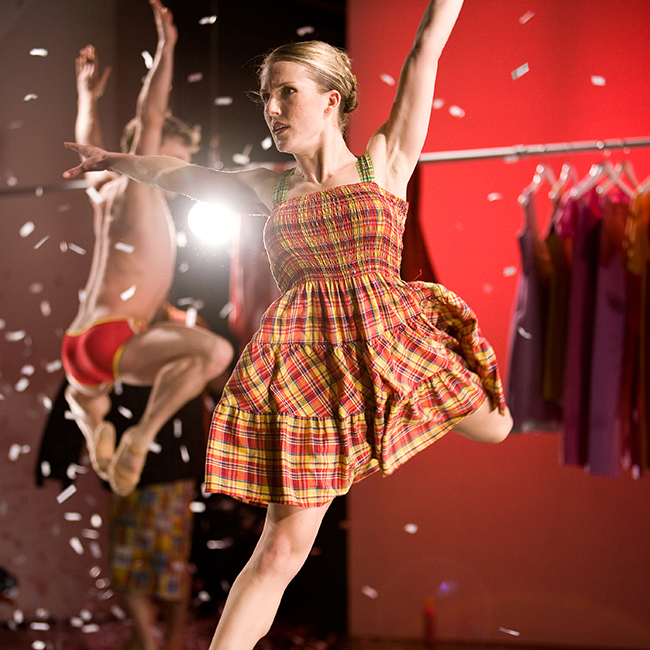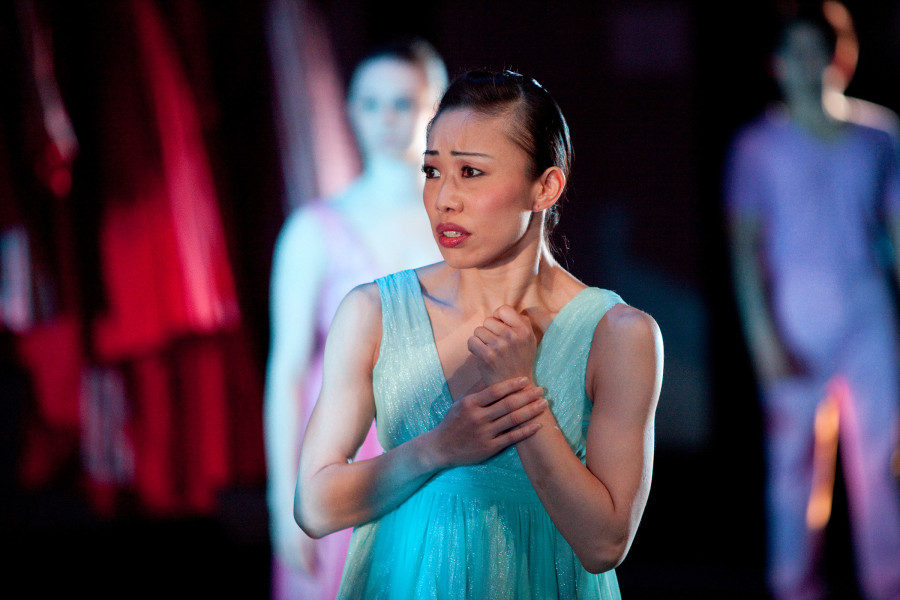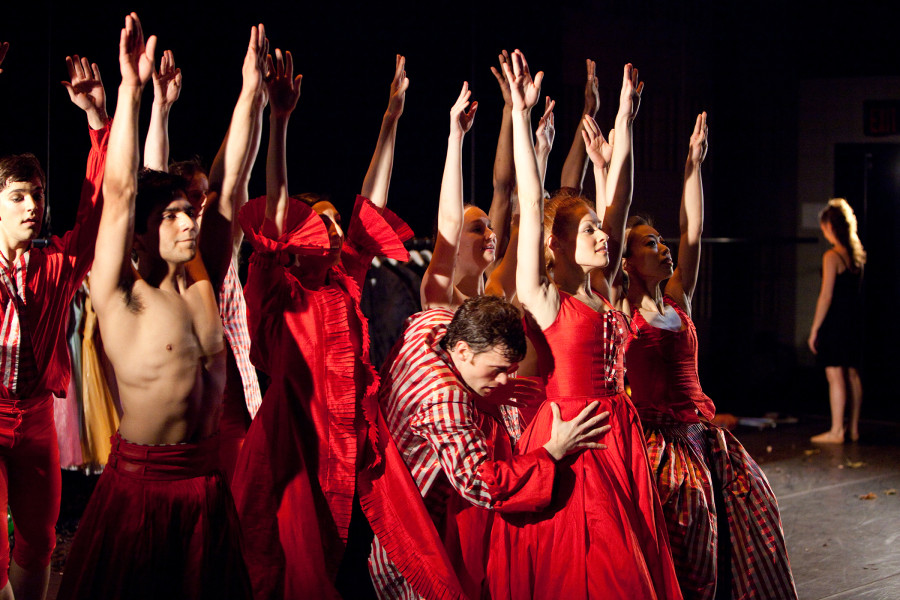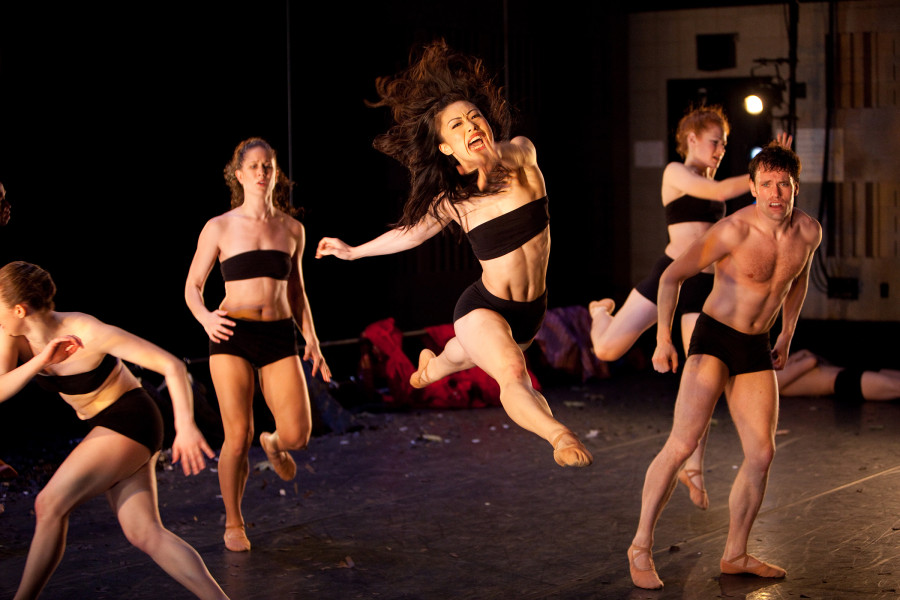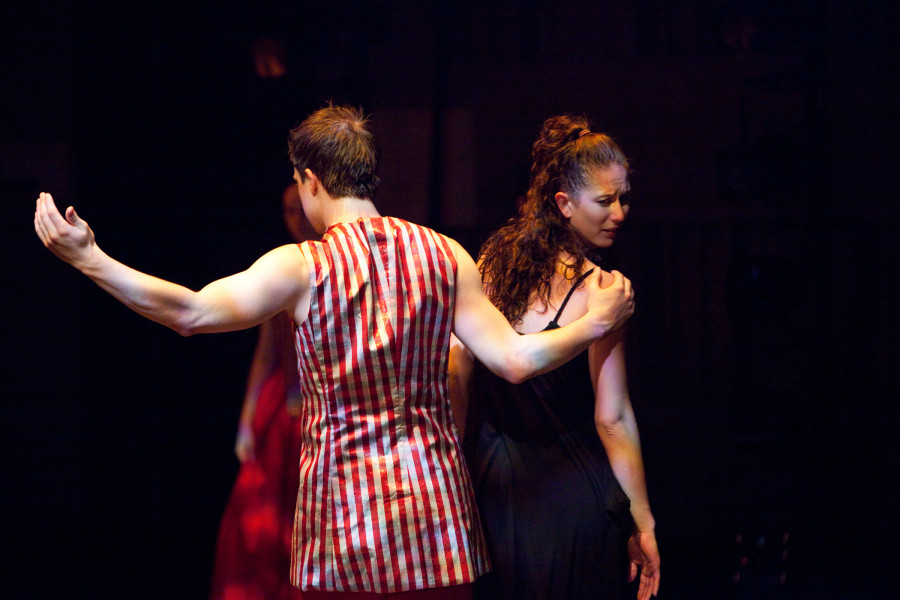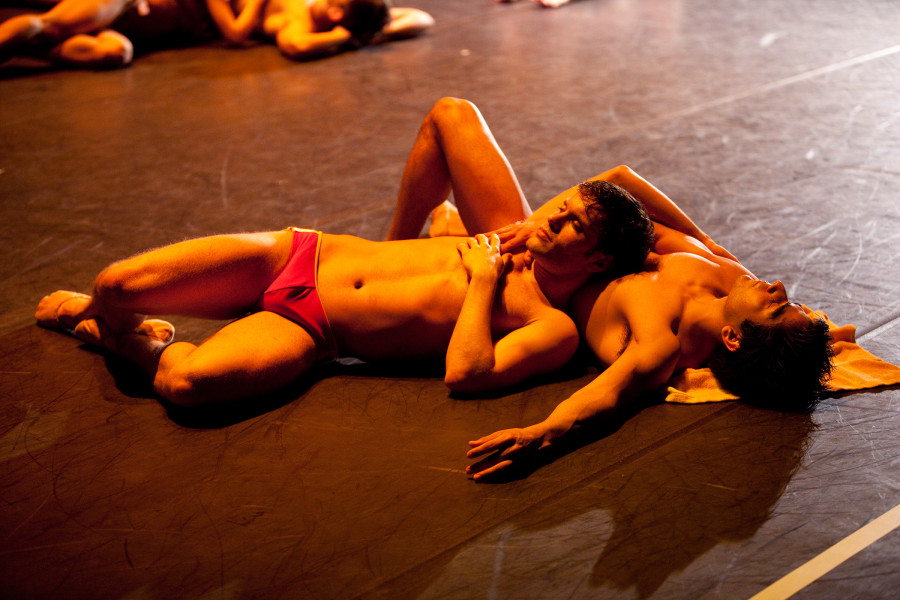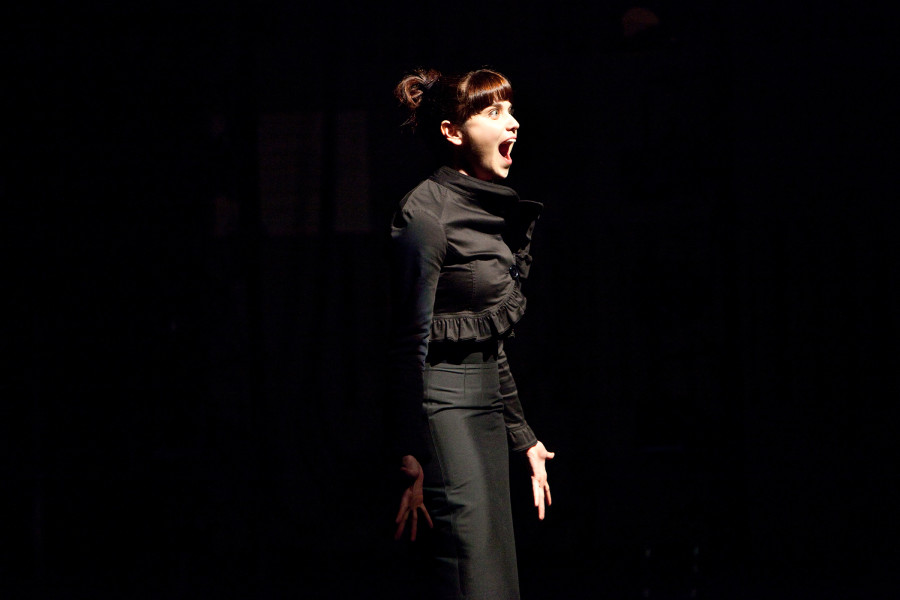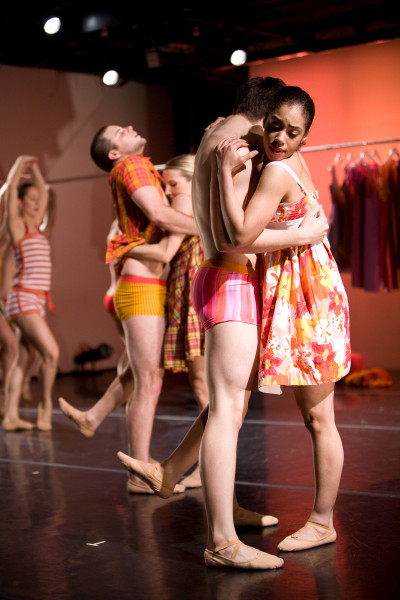All Photos: Rosalie O’Connor
MUSIC: Antonio Vivaldi
CHOREOGRAPHY: Chase Brock
SET & COSTUME DESIGN: Dane Laffrey
LIGHTING DESIGN: Tyler Micoleau
TEXT: David Zellnik (CBE-commissioned text)
NUMBER OF DANCERS: 10
NUMBER OF GUEST ARTISTS: 1
PREMIERE DATE: May 22, 2008
PREMIERE VENUE: Joyce SoHo
RUNNING TIME: 50 minutes
ORIGINAL CAST: Lex Dones, Nathan Duszny, Ashley Eichbauer, Ryan Patrick Farrell, Marimba Gold-Watts, Ryan Jackson, Anna Kaiser, Yukiko Kashiki, Natalie Lomonte, Connor Kilian Weigand; featuring Katie Rayle as Roz G
ADDITIONAL PERFORMANCES: May 23, 24 and 25, 2008 / Joyce SoHo; April 25, 2008 / 92nd Street Y (work-in-progress preview); April 23, 25 and 26, 2009 / Baruch Performing Arts; November 21 – December 8, 2019 / Theatre Row
“The Four Seasons,” the final piece, is, improbably, even better. It’s hard to find a new take on Vivaldi’s overfamiliar score, but Mr. Brock manages it, constructing an apocalyptic scenario of climate change that is both entertaining and disturbing. Katie Rayle as Roz G., a tightly put-together television weather announcer, is quite brilliant (“it’s sunny, it’s perfect, it’s boring, it’s awesome”), and Mr. Brock never overuses her, welding the work’s parts together with admirable skill. The bright costumes, some lovely, some queasily camp (by Dane Laffrey), help too, as does the evocative lighting by Traci Klainer. It’s sunny, it’s perfect, it’s boring, it’s awesome. It’s an experience.”
– The New York Times
The second act, however, moves beyond light entertainment with Brock’s rendition of “The Four Seasons,” using Vivaldi’s familiar score. After a predictably bright, springy first section that’s reminiscent of Paul Taylor’s gracious lyricism and Susan Stroman’s cleverly recycled steps, Roz G. (actress Katie Rayle in a dead-on send-up of a TV weather girl) enters amongst the dancers and, while they change out of their spring attire, predicts an unprecedented temperature rise. “It’s 135-degrees; it’s a frigging record!
The dancers reappear in beachwear and swelter, rubbing on lotion, swatting mosquitos, playing volleyball, and making love in the sand. All the costumes hang on a pole upstage that lowers imperceptibly during the course of the dance. A sudden snowstorm interrupts their play, they shiver and huddle, and Roz returns to note the phenomenon with her synthetic cheeriness. Intimations of global climate change emerge. Brock uses the music cleverly to support the narrative.
When the “Autumn” section comes, the dances don lush, faux-18th century garb. Ashley Eichbauer appears to be pregnant. She retires and returns, dressed in a plain black shift, for a sad lyric solo, seemingly having lost the baby. As the dancing continues, people are felled by some unknown pestilence; they collapse and some recover. Roz delivers restorative health drinks, which revive all but one victim.
In the “Winter” section, the dancers in black bikinis fall to irrational behavior, scribbling on walls with imaginary chalk, running around madly, fainting and reviving, fantasizing volleyball again. Another person dies. Everyone flies into a leaping, flailing rage as the music swells to its finale. The The ballet, which began almost frivolously, turns into a genuinely moving work, with a powerful point of view, an expression of potential terrestrial disaster. Who’d have thought such a naively playful beginning could become so profound?”
– Gay City News
